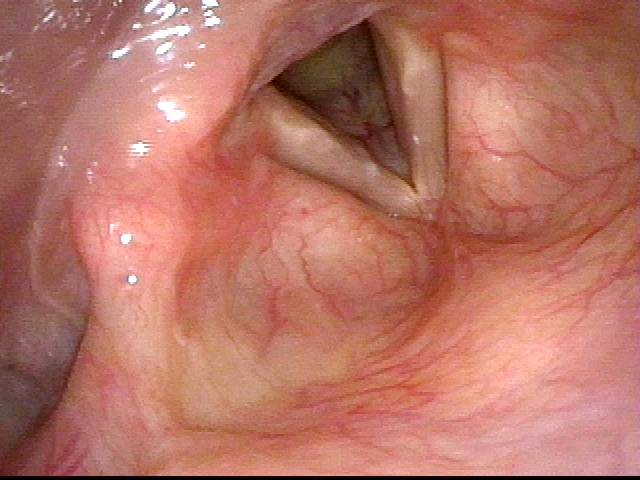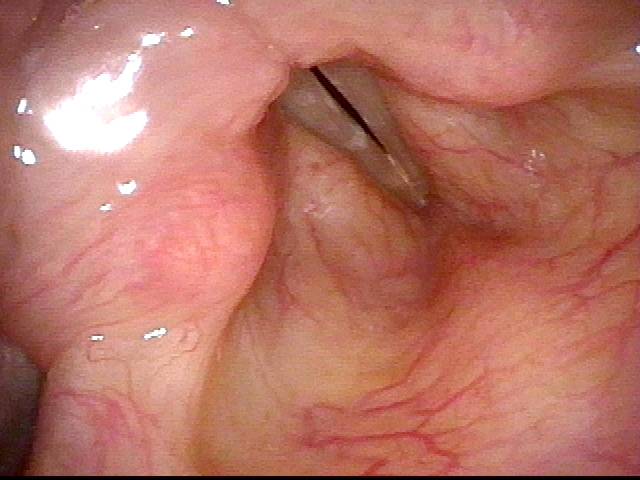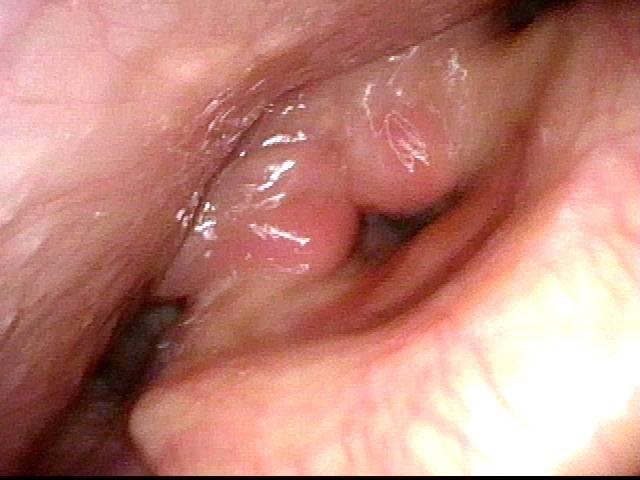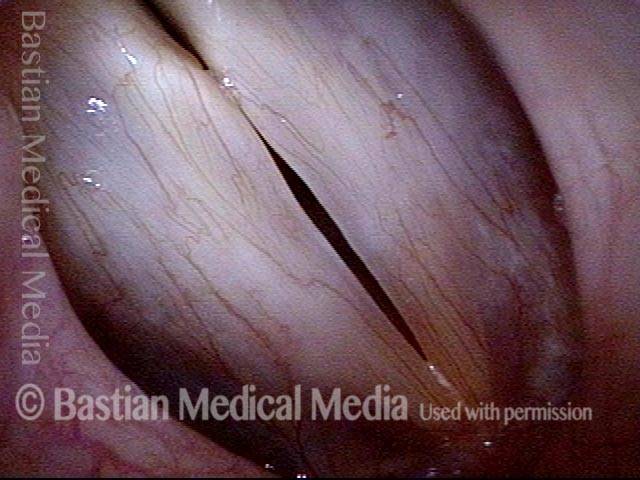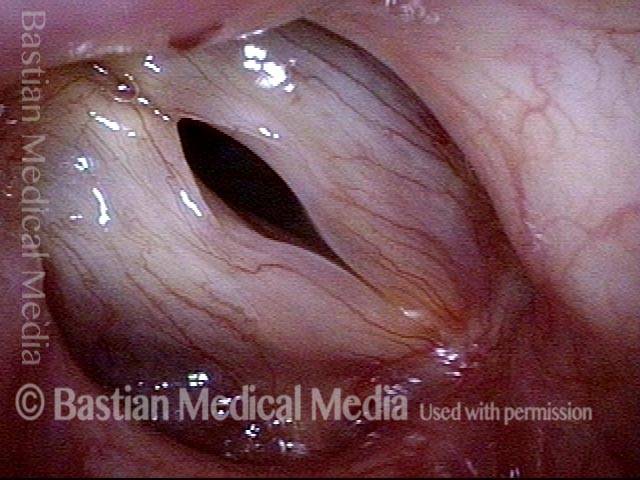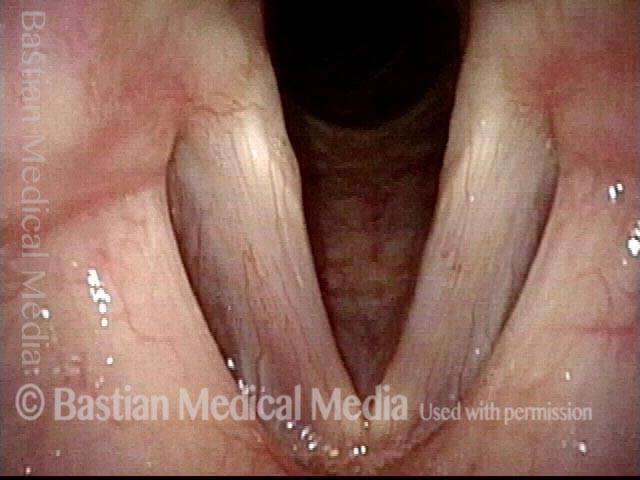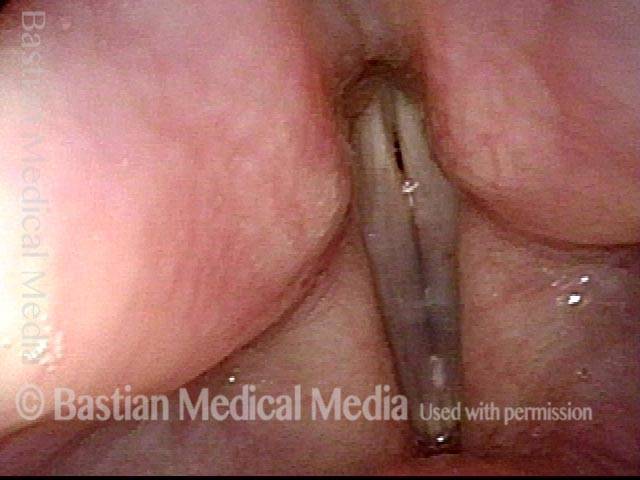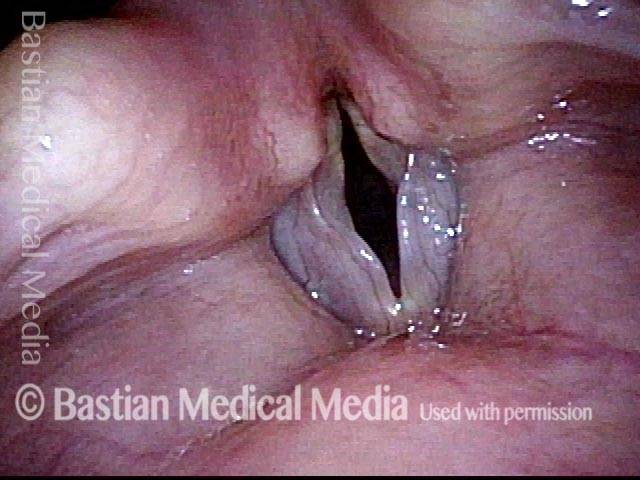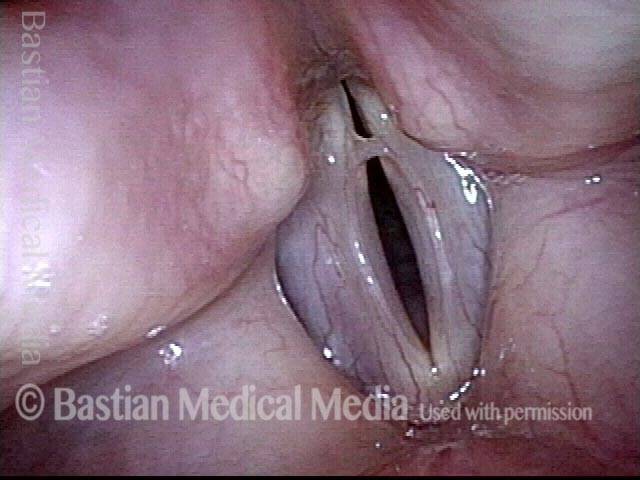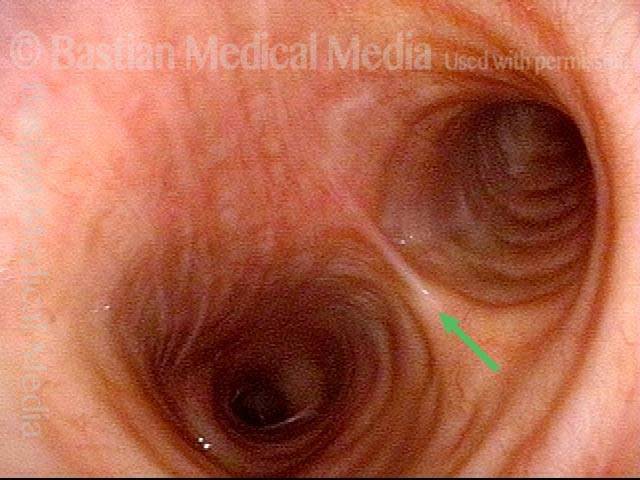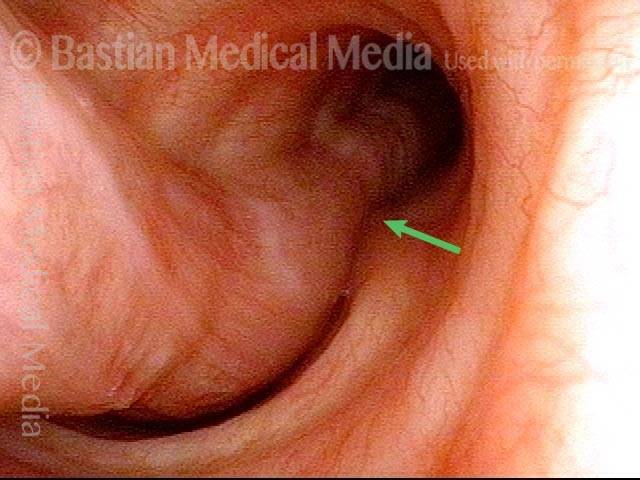Nonorganic is a term used to describe an apparently physical disorder that in fact is not arising from the organ or body part but from an abnormality of the use or presentation of that body part.
Examples
- Nonorganic voice disorder, in which the larynx is structurally and neuromuscularly normal, but the sound is absent or very abnormal.
- Nonorganic breathing disorder, tracheal, in which breathing noises made in the trachea mimic asthma.
- Nonorganic dysphagia, in which swallowing function is normal but factitious events occur during the voluntary phases of swallowing.
See also: laryngeal nonorganic breathing disorder; nonorganic overlay; nonorganic cough; nonorganic asthma;
Nonorganic Voice Disorder
Example 2
Example 3
Nonorganic Breathing Disorder, Tracheal
